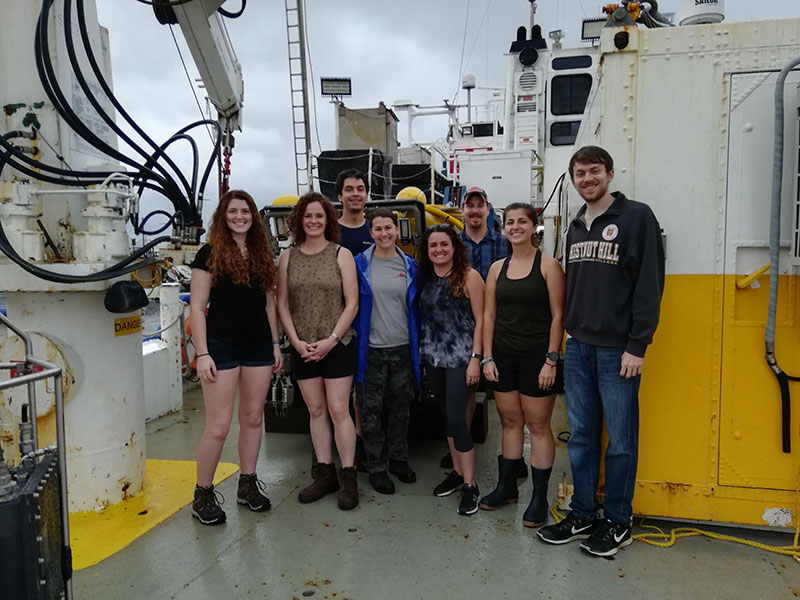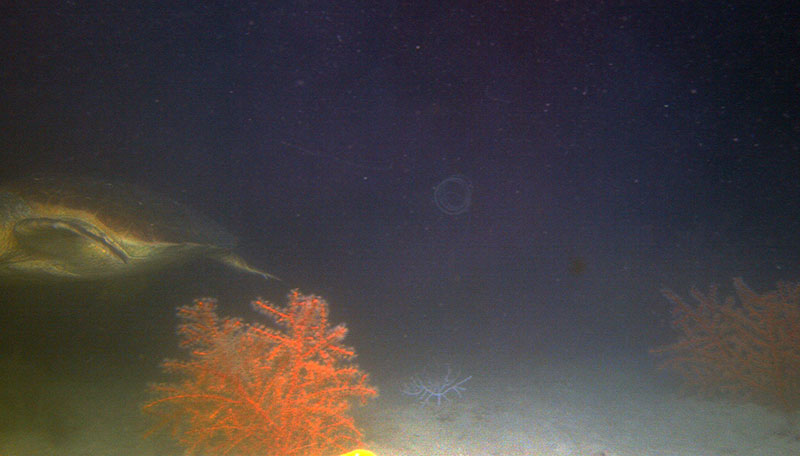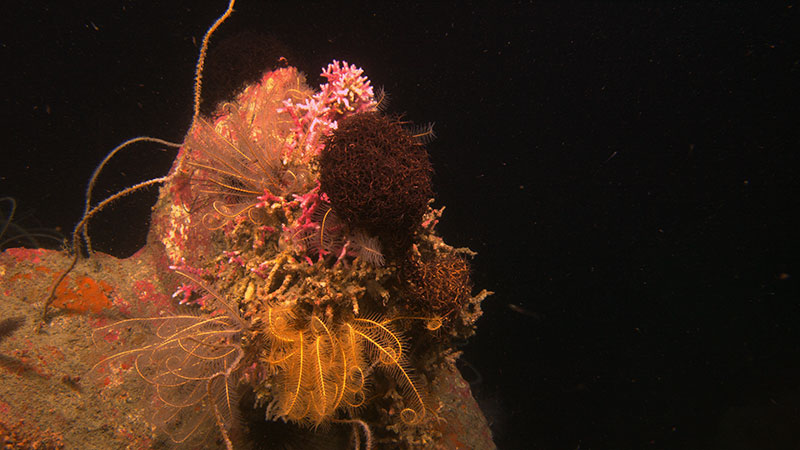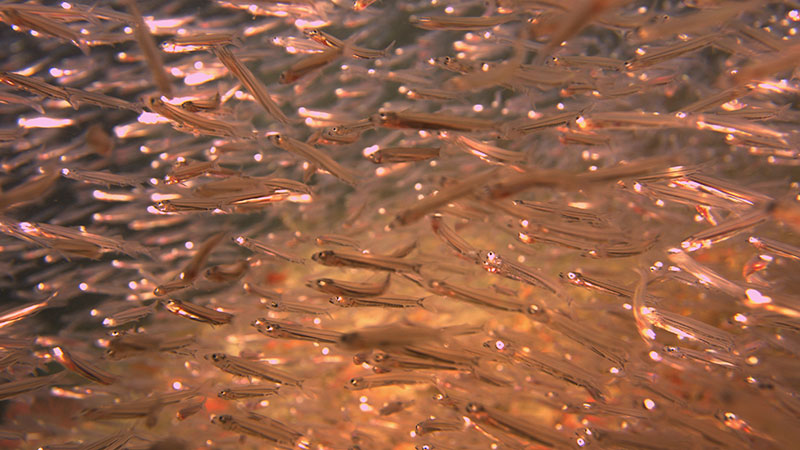
By Santiago Herrera, Chief Scientist and CYCLE Lead Principal Investigator, Lehigh University

Science team of the CYCLE research cruise onboard R/V Pelican. Not pictured here: ROV and ship crew. Image courtesy of Connectivity of Coral Ecosystems (CYCLE) in the Northwestern Gulf of Mexico 2019. Download larger version (jpg, 6.1 MB).
Oceanographic fieldwork is always challenging. It can take months to prepare for a couple of weeks at sea. Once you set sail, oceanic and atmospheric conditions can unexpectedly change, equipment breaks and repairs must be done with what you have onboard, and supplies run out and you have to exercise your creativity. This is why one of the most important things when going out on a research cruise is assembling a great team of scientists, engineers, and crew to face and overcome these challenges. We were lucky to have one of those great teams for the first cruise of the CYCLE project.

Glimpse of a sea turtle swimming by Swiftia exerta colonies at Alderdice Bank, 90 meters (295 feet) deep. Image courtesy of Connectivity of Coral Ecosystems (CYCLE) in the Northwestern Gulf of Mexico 2019. Download larger version (jpg, 6.8 MB).
On R/V Pelican (April 25–May 12), we:
Overall, we had a successful research cruise, despite losing four days to bad weather, i.e., being chased by thunderstorms, 30 to 40 knot winds, and waves as high as 11 feet. The hard work and professionalism of everyone onboard made this expedition a success.

Basket stars, feather stars, and corals colonizing the top of a carbonate outcrop at Alderdice Bank, 86 meters (282 feet) deep. Image courtesy of Connectivity of Coral Ecosystems (CYCLE) in the Northwestern Gulf of Mexico 2019. Download larger version (jpg, 6.4 MB).

School of curious small fish attracted by the ROV lights while diving at night. Image courtesy of Connectivity of Coral Ecosystems (CYCLE) in the Northwestern Gulf of Mexico 2019. Download map (jpg, 5.8 MB).
The second research cruise of this field season on R/V Southern Journey (May 17–26) was also met with severe weather. The team endured the rough seas for two days, making significant fish collections for the project. However, sea conditions worsened, becoming unsafe to continue the work. Thus, this expedition was unfortunately cut short. Not to worry, we are already making plans to go back out and complete the work later this year.
The samples and data we collected over this first field season will be complemented with field seasons in 2020 and 2021 and will be analyzed over the next few years to enhance our of understanding of the patterns of connectivity of coral ecosystems in the northwestern Gulf of Mexico and the processes that structure these patterns. This information will be help resource managers better protect, restore, and conserve these resources.